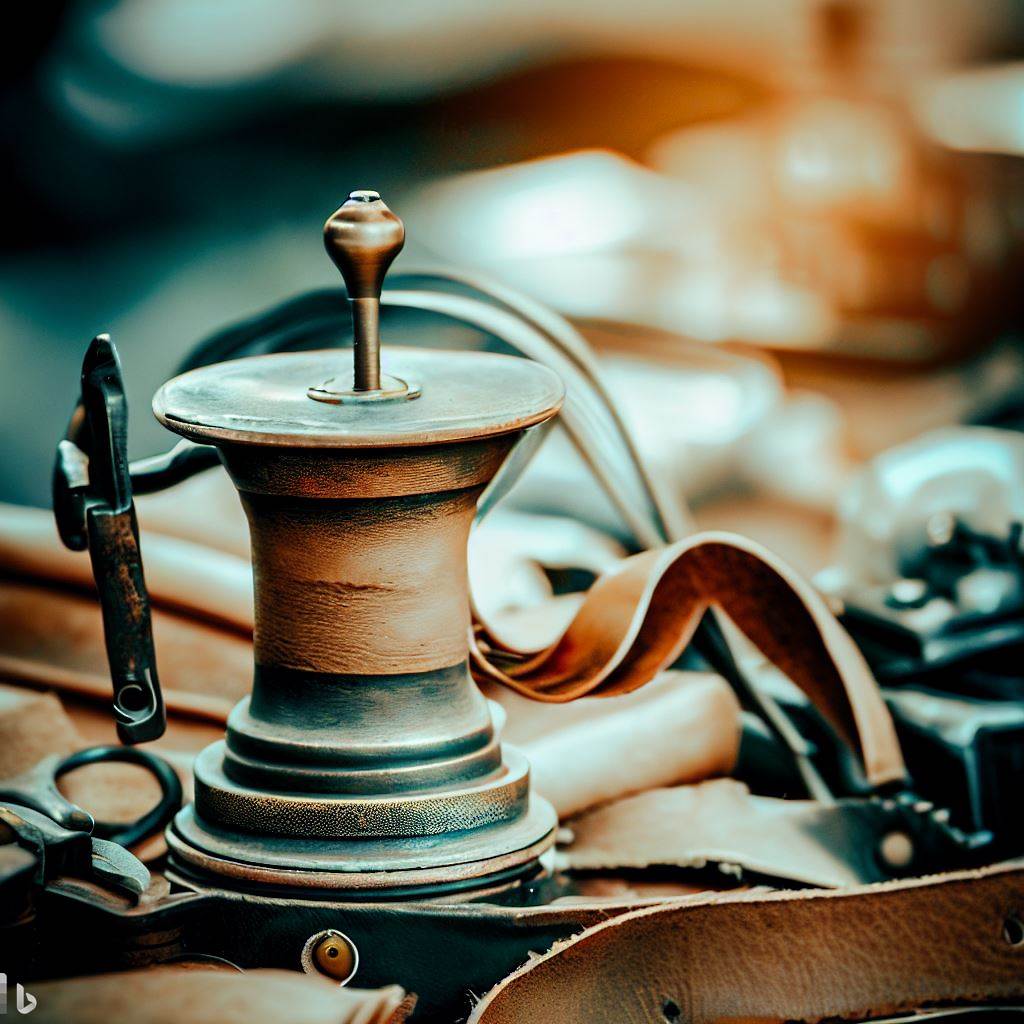Leatherworking and Nature: Drawing Inspiration from Natural Elements
Introduction
As a material deeply rooted in the natural world, leather resonates profoundly for artisans seeking to honor environmental connections through their craft. From earthy textures to symbolic imagery, the creations of eco-conscious leatherworkers capture the beauty and wisdom of nature.
In this article, we explore ways contemporary makers infuse their pieces with inspiration drawn from the elemental world around them. We look at how their materials, techniques, and designs celebrate cycles, textures, and symbols from nature. By thoughtfully incorporating aspects of their local landscape and ecology, leather artisans continue the craft’s ancestral ties to the living planet that sustains us all.
Sourcing and Using Sustainable Natural Materials
Many makers uphold traditional practices utilizing renewable natural materials that avoid relying on industrial processes harmful to the planet. Their material choices express care.
Responsibly Sourced Leathers
Artisans source leathers from ethical ranches using rotational grazing and holistic animal husbandry rather than intensive factory farms. Such hides connect with sustainably tended lands.
Traditional Botanical Tanning
Rather than chromium chemical tanning, more studios use old-fashioned oak gall, spruce bark, or scented mimosa tanning for pleasingly grained, safe leathers. Botanical methods make leather fully biodegradable.
Natural Plant Dyes
Coloring leather solely with renewable organic pigments like indigo, chestnut, and acorn avoids synthetic chemical dyes. Ancient accessible plant materials make beautiful dyes.
Locally Harvested Embellishments
Makers adorn items with responsibly gathered feathers, beads, bones, and seashells from their native ecosystems rather than imported exotic materials. Local resources build local resilience.
Honoring Regional Wildlife and Landscapes
From forests to deserts, artisans worldwide allow the natural beauty surrounding their studios to guide designs celebrating nearby habitats.
Symbolic Flora and Fauna Motifs
Leather tooling and embossing frequently incorporates meaningful regional wildlife like ravens, salmon, or bison that hold cultural significance. Neighboring nature offers inspiration.
Replicating Area Terrain Textures
Patterns tooled into leather echo textures from cracked lakes, flowing rivers, windswept dunes, rainforest canopy, and other environs the maker inhabits. Leather captures land’s poetry.
Landscape Scenes and Mapping
Some artisans sketch or stain expansive vistas of rugged home terrain into leather wall art, frames, and jewelry conveying the spirit of the places most cherished. Leather immortalizes lands loved.
Foraged Leather Decorations
Local seeds, lichen, and barnacles get ingeniously incorporated into pieces through inlay or mosaic to infuse natural elements. Nearby offerings adorn.
Sustainable and Natural Production Processes
In addition to materials, eco-minded makers selectively utilize production methods aligning with values of holistic environmental care and renewable techniques.
Solar, Hydro, and Human-Powered Workshops
Leather studios increasingly operate off-grid through solar, pedal, or water wheel power. Avoiding fossil fuels honors both heritage and the environment. Some still employ treadle sewing machines.
Natural Biodegradable Additives
Rather than synthetic polymers and petroleum-based chemicals, diligent makers select glues, finishes, and paints derived from plants like pine resin or flax seed oils that fully decompose without toxicity.
Hand Production Over Machinery
Small shop artisans continue historically low-impact hand cutting, sewing, and tooling rather than mass factory production dependent on heavy electricity demands. Hands craft sustainability.
Waste Reduction and Upcycling Approaches
Scrap gets carefully repurposed into accessories or stuffed toys rather than trashed. Some makers even recycle salvaged pre-used leather. Conservation ethics leave the gentlest footprint.
Designs Inspired By Natural Forms and Processes
Beyond sourcing, sustainable leatherworkers allow symbology and shapes from the living world to thematically shape their pieces on conceptual levels.
Biomimicry Patterns From Nature
Leaf venation, fractals, honeycombs, and botanical symmetries organically influence designs tooled into leather goods. Biomimicry repeats nature’s genius.
Honoring Cycles and Elements
Some pieces poetically reflect the passage of seasons, cycles of water, or transformative power of earth through abstract patterns. Conceptual nature references elevate meaning.
Natural Shapes and Forms
Leather easily gets hand-molded into shapes emulating pebbles, seashells, antlers, feathers, and other earthly forms. This sculpting remains accessible to makers worldwide.
Connecting Ancient Wisdom and Ecology
Design motifs incorporate ancient petroglyphs, cave drawings, or mythic beings representing our ancestor’s ecological knowledge and worldview. Their vision of interconnection inspires.
Future Trajectories for Eco-leatherworking
As climate awareness grows, artisans are just beginning to explore further ways to intertwine fine leather craft with environmental care and innovation.
Carbon-Neutral and Negative Leather Production
Some makers hope to eventually employ renewable power in workshop spaces and counterbalance material impacts through verified carbon offsetting such as forest restoration partnerships.
Lab-Grown Leather Exploration
Biofabricating leather-like materials from cell cultures could eliminate livestock entirely but challenges remain matching traditional leather’s suppleness. Shared research advances solutions.
Recontextualizing Exotic Leather Symbolism
Rather than unsustainable endangered species skins, innovators propose lasering mimicry of alligator or shark patterns onto common leathers as sustainable alternatives. Technology pivots meaning.
Mainstreaming the Field’s Sustainable Innovators
Notable green leatherworkers deserve amplified visibility as influencers guiding the whole industry, not just niche practitioners. Their leadership steers the future.
Conclusion
Leather’s earthy nature lends it perfectly to holistically honoring ecology and interconnection through ever more sustainable materials and nature-inspired designs. By aligning leatherworking with wisdom both ancestral and futuristic, this generation of artisans reveals fresh opportunities for the craft and our cultures to deepen symbiosis with the living planet. With care and creativity, makers help transform leatherworking itself into a renewing global celebration of terrestrial beauty and balance. The possibilities stretch as vast as undyed leather ready for hand tooling. How will leatherworkers and nature collaborate to etch a more harmonious future?
